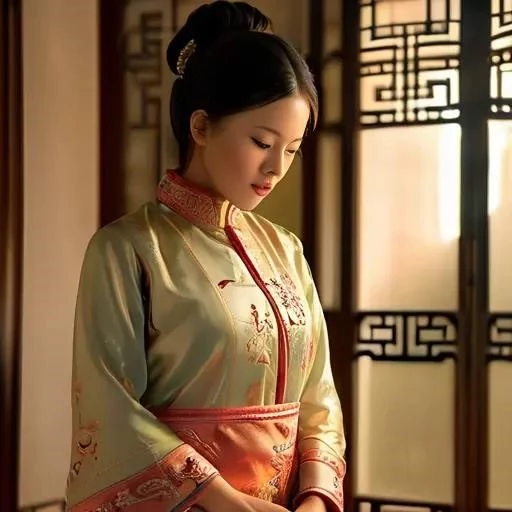
Beyond ‘Wife In Chinese’: Unlocking the Cultural Codes of Love, Tradition, and Tomorrow’s Digital Companions!
Beyond ‘Wife In Chinese’: Unlocking the Cultural Codes of Love‚ Tradition‚ and Tomorrow’s Digital Companions!
In a world increasingly connected yet often misunderstood‚ the simple act of translating a word can unravel a tapestry of profound cultural insights․ Take‚ for instance‚ the term “wife” in Chinese․ Far from a singular‚ straightforward equivalent‚ this seemingly ordinary word opens a fascinating linguistic labyrinth‚ revealing centuries of societal evolution‚ regional nuances‚ and deeply ingrained cultural values․ Understanding the various ways to address a spouse in Mandarin isn’t merely an academic exercise; it’s an immersive journey into the heart of Chinese identity‚ reflecting shifts in social etiquette‚ familial roles‚ and even the future of human relationships․
The linguistic landscape surrounding “wife” is incredibly rich‚ offering a compelling glimpse into China’s historical depth and dynamic present․ From the formal pronouncements of ancient imperial courts to the intimate whispers of modern homes‚ each term carries its own weight and context․ This intricate system of address‚ often bewildering to outsiders‚ provides a powerful lens through which to appreciate the subtle complexities that shape everyday interactions and enduring traditions․ By integrating insights from historical usage and contemporary colloquialisms‚ we can begin to grasp the true significance of these linguistic choices‚ recognizing them as vital markers of respect‚ affection‚ and social standing․
| Chinese Term | Pinyin | Direct Meaning | Context & Usage |
|---|---|---|---|
| Qīzi | Wife | Formal‚ written‚ standard term․ Widely accepted across all contexts‚ often used in official documents․ | |
| Lǎopó | Old woman / Wife | Informal‚ colloquial‚ and often affectionate․ Most commonly used among couples and in everyday intimate speech․ | |
| Tàitai | Madam / Mrs․ / Wife | Polite and respectful‚ frequently used when addressing someone else’s wife‚ or in more formal social settings․ | |
| Fūrén | Madam / Lady / Wife | Highly formal and deferential‚ traditionally associated with wives of officials‚ dignitaries‚ or in historical narratives․ | |
| Àiren | Lover / Spouse | A gender-neutral term for spouse‚ gaining prominence during specific historical periods (e․g․‚ 1960s-1980s)․ Still used today․ | |
| Xífù | Daughter-in-law / Wife | Exhibits regional variations; in some northern areas‚ it functions as ‘wife‚’ while in southern provinces‚ it primarily means ‘daughter-in-law․’ |
Reference: For further linguistic exploration‚ consult reputable online dictionaries and cultural exchange platforms like Chinese-Forums․com․
Delving deeper‚ terms like (qīzi) serve as the standard‚ formal designation‚ typically employed in official capacities or written communication․ Conversely‚ (lǎopó)‚ translating literally to “old woman‚” is the overwhelmingly popular colloquial term‚ imbued with warmth and familiarity‚ widely used by husbands to refer to their wives in daily life․ Then there’s (tàitai)‚ a polite and respectful form often used when referring to someone else’s wife‚ or in more formal social engagements‚ carrying a sense of deference․ Historically‚ (fūrén) denoted the wives of high-ranking officials or nobles‚ a term still occasionally used today to convey immense respect․ “These variations are not just synonyms‚” explains Dr․ Li Wei‚ a prominent sinologist‚ “they are cultural signposts‚ guiding us through the intricate web of social hierarchies and personal relationships that define Chinese society․”
Remarkably‚ this linguistic evolution continues‚ adapting to unprecedented technological shifts․ As Artificial Intelligence (AI) increasingly weaves itself into the fabric of human existence‚ the concept of companionship is expanding in fascinating ways․ We are witnessing the emergence of AI partners‚ or chatbots‚ offering comfort and interaction‚ particularly for those seeking connection․ A recent report highlighted a 75-year-old Chinese man finding solace and companionship in his AI partner‚ a poignant example of how technology is beginning to redefine relational dynamics․ This development‚ while seemingly futuristic‚ prompts us to ponder whether new terms of address will emerge for these digital companions‚ further enriching the lexicon of “wife” or “partner” in an increasingly diverse relational landscape․ It’s a testament to humanity’s enduring need for connection‚ now mediated by algorithms․
This nuanced appreciation of “wife” in Chinese extends far beyond mere vocabulary; it’s about embracing the dynamism of language as a living entity‚ constantly shaped by cultural currents and individual experiences․ From the traditional idiom of (lǎopó háizi rè kàngtou)‚ evoking the simple‚ good life of a wife‚ children‚ and a warm bed‚ to the unfolding narrative of AI companions‚ the journey of understanding is continuous․ By acknowledging these linguistic layers‚ we not only enhance our cross-cultural communication skills but also gain a deeper empathy for the diverse ways in which love‚ partnership‚ and family are conceived and expressed globally․ It’s a powerful reminder that language is not just a tool for communication‚ but a vibrant repository of a culture’s soul․
Ultimately‚ the exploration of “Wife In Chinese” reveals more than just a collection of words; it unveils a rich cultural narrative‚ perpetually evolving yet deeply rooted in history․ It underscores the incredible adaptability of language to reflect changing social structures‚ from the ancient imperial court to the modern digital frontier․ As we look forward‚ the ongoing dialogue between tradition and innovation promises to yield even more fascinating insights into how we define and cherish our most significant relationships‚ both human and‚ increasingly‚ artificial․ The future of companionship‚ beautifully articulated through the evolving lexicon of Chinese‚ is undeniably bright and remarkably diverse․



